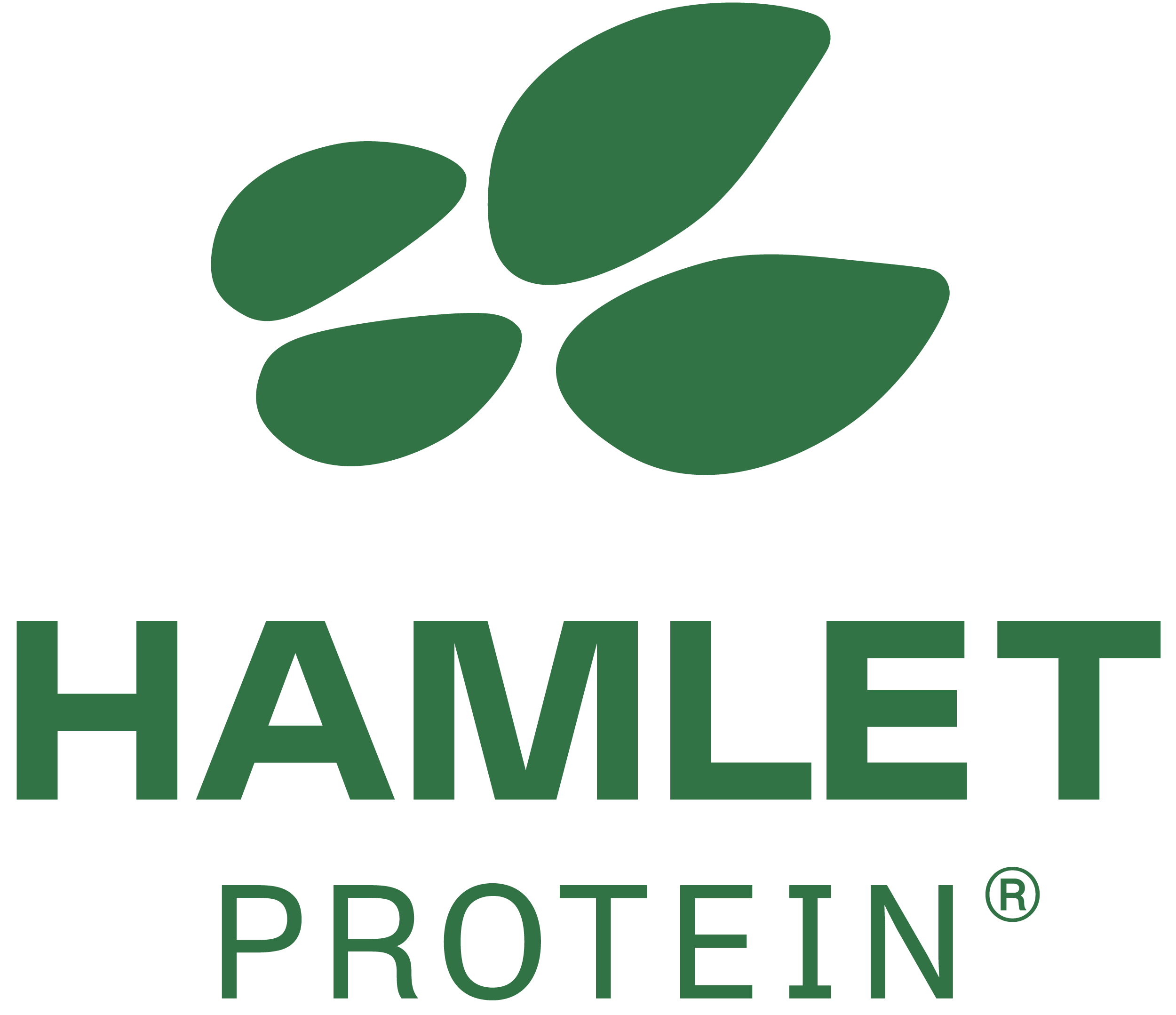



The role of dietary fiber in piglet diets
Dietary fiber is an essential part of a balanced dietDietary fiber has shifted from being viewed as an anti-nutrient to an essential part of a balanced diet. Cereal grains make up most of the diet and are a main source of energy but will also contribute a significant amount of fiber. Protein sources like soybean meal, rapeseed meal, and sunflower meal provide significant amounts of amino acids along with various complex carbohydrates. Fiber is ubiquitous in animal feed making it necessary to understand how it interacts with other nutrients and the host’s microbiome.
We refer to the different types of carbohydrate structures and their physicochemical properties when describing dietary fiber. It is typically characterized as being soluble or insoluble according to current methods that are available to analyze carbohydrates. However, solubility does not equate to fermentability; in fact, insoluble dietary fiber (IDF) may be fermented by the gut microbiota, albeit at a much slower rate than soluble dietary fiber (SDF). Fermentability may better differentiate the distinct types of fiber, but this is not as easily measured compared with other nutrients. The extent of fermentation of dietary fiber will vary among feedstuffs and is dependent on the age of the animal. Nursery diets are formulated to be very digestible to accommodate the immature gut of young pigs, and thus have traditionally contained limited dietary fiber.
Dietary fiber can have either positive and negative effects on pig performance and are generally dictated by health status, environmental conditions, or type of diet. A reduction in nutrient digestibility and dilution in energy density are often associated with increased dietary fiber ingestion. These consequences are not desirable in food animal production but are sought after in human nutrition to prevent health challenges attributed to Western diets. Highly viscous soluble fibers increase the sloughing of intestinal cells and reduce protein digestibility resulting in more undigested protein reaching the hindgut. Conversely, soluble fibers that do not form viscous digesta do not have deleterious effects on the animal. Insoluble fibers are often recommended to mitigate health challenges in early nursery and are typically comprised of inert and nonfermentable carbohydrates. Insoluble fibers can scrape the mucosal lining and provide alternate surfaces for pathogenic bacteria to adhere to. The physical characteristic of insoluble fiber that is often overlooked when formulating highly digestible and nutrient-dense nursery diets is its ability to stimulate peristaltic movements and induce regular transition of digesta through the gastrointestinal tract to prevents stasis and dysbiosis. It is also argued that more rapid transit of digesta through the gut may stimulate feed intake, although this has not been investigated specifically.
There is a plethora of research indicating the modulation of the gut microbiome using functional fibers that result in improved intestinal health. Functional fibers refer to dietary fibers that induce physical and physiological benefits to the host. An increased production of fermentation metabolites (i.e. short-chain fatty acids; SCFA) by feeding functional fiber suggests the presence of microbial populations that are beneficial to the host. The production of SCFA from fiber fermentation promotes the growth of the intestinal surface area which improves absorptive capacity. This may explain why some trials that supplemented functional fibers in the early nursery have shown improved performance through the end of the nursery.
Evaluation of fiber supplementation in piglets
Most of our understanding of fiber nutrition has been generated using purified fiber ingredients to make it easier to associate a response to the specific characteristics of that type of fiber. We have traditionally used lignocellulose to represent insoluble fiber and methylcellulose, inulin, or pectin as a source of soluble fiber with varying effects on viscosity. A caveat to this type of research is that these purified ingredients are not accurate representations of the common types of fiber used in animal feed. We also often find contradicting results in the literature due to differences in research conditions and methodologies used. Despite the inconsistencies, published literature and proof of concept trials have demonstrated the value of dietary fiber in the physiology of the pig, particularly on intestinal health.
The direction of fiber nutrition
The ban on pharmacological levels of zinc oxide has prompted a somewhat haphazard system of finding an alternative feed technology. Many proposed solutions attempt to replicate the antimicrobial effect of zinc oxide to ameliorate diarrhea and improve nursery performance. However, a diverse microbiome is more conducive to an efficient and robust pig. Functional fibers do not have a direct antimicrobial effect but its ability to modulate the gut microbiome indirectly triggers a similar response where commensal and beneficial microbial populations compete with pathogenic bacteria (i.e. competitive exclusion). Butyric acid produced from fermentation of functional fibers will also reduce gut permeability by stimulating the proliferation of goblet cells that produce mucin, subsequently increasing the thickness of the mucosal layer to prevent the adhesion of toxins and pathogens to the epithelial lining.
It is typically economical to use fibrous feed ingredients because many are cheap byproducts of other industries. The negative impacts of feeding high levels of fiber to growing pigs is unlikely to be observed in young pigs because the objective of fiber supplementation in the nursery is not to reduce feed costs but to elicit specific health benefits that may be achieved at comparatively lower levels of total dietary fiber in the diet. It is critical to use the right types of fibers to improve the likelihood of evoking the desired response under certain health and environmental scenarios. It is no longer a question of whether to supplement young animal diets with functional fibers; but rather, it is how to effectively incorporate dietary fiber into a successful nursery program. Effective fiber supplementation requires a holistic view of diet formulation that considers synergisms and antagonisms of nutrients as well as the influence of current health and environmental conditions.
Next generation functional fibers are active ingredients that have intentional physiological effects on the animal. HP FiberBoost and HP FiberStart are enzyme-treated functional fiber solutions that combine the physical benefits of insoluble fiber and the stimulating effect of soluble carbohydrates on gut health. Specific enzymes hydrolyze sections of the carbohydrate framework to reduce viscosity while maintaining the desired structural functionality of fiber. This targeted cleaving enhances the concentration of carbohydrate fractions that stimulate the proliferation of beneficial bacteria in the hindgut resulting in the production of significant amounts of short-chain fatty acids. Preliminary trial results from independent research facilities and commercial farms show a positive effect of HP Fiberboost and HP Fiberstart on piglet resilience resulting in less need for medication in the absence of pharmacological levels of ZnO.










